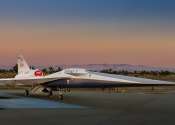Biofuel is poised to usurp crude oil refining in the Bay Area: A green solution or 'greenwashing'?
With concerns over sustainability increasing in the energy industry, fossil-fuel companies have embraced plans to revamp, rather than decommission, vast networks of steaming, flashing and aging refinery pipelines into more ...
Feb 5, 2024
0
1









